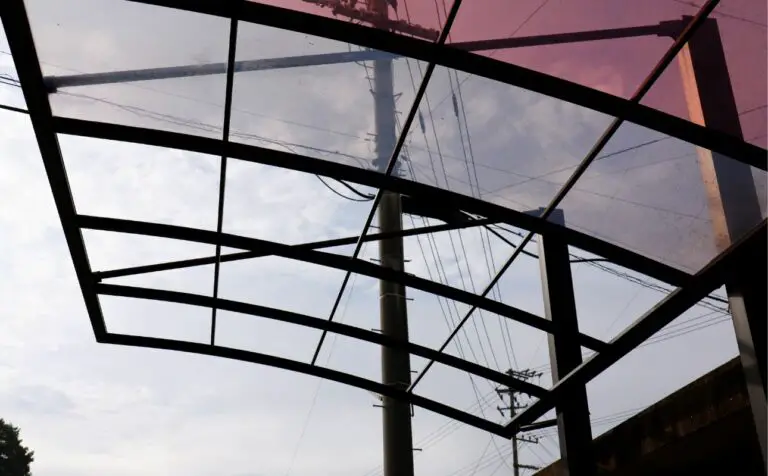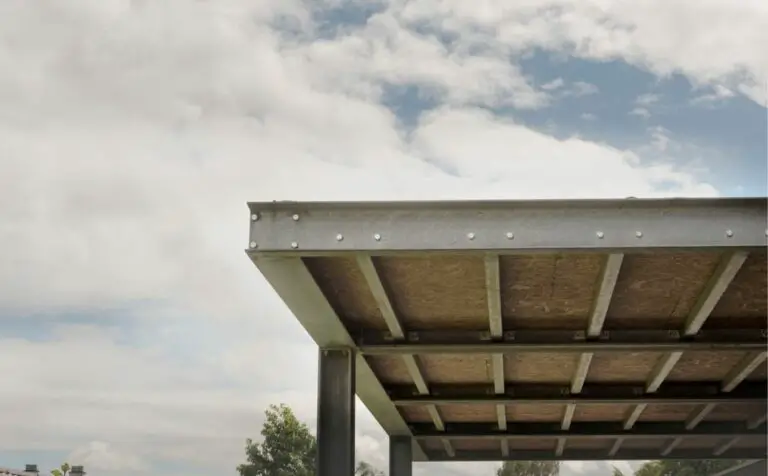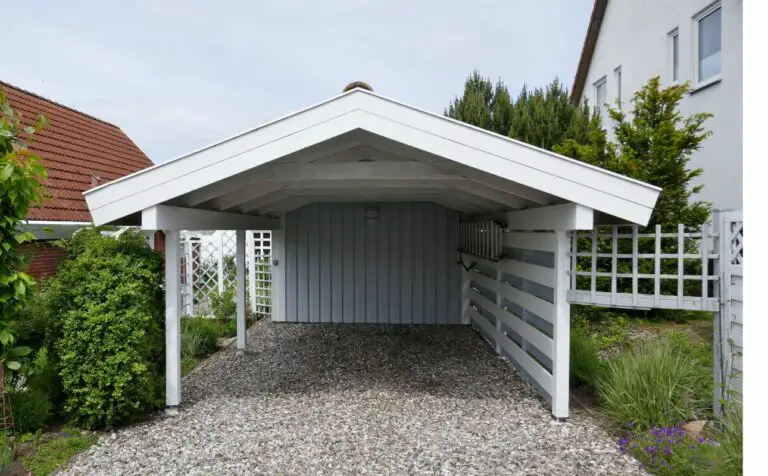How Are Carports Anchored? (Useful Tips)
Carports provide valuable shelter and protection for vehicles, but to ensure their stability and safety, it’s crucial to anchor them securely. Carport anchoring involves various methods and techniques to firmly attach the structure to the ground or other solid surfaces.
Strong winds, heavy snow loads, or other external forces cannot damage or displace the carport thanks to proper anchoring. Let’s explore some common methods used to anchor carports and the importance of this process for ensuring the structural integrity of these valuable structures.

Importance of Anchoring a Carport
Properly anchored carports provide added protection against high winds, hail, heavy snowfall, and even earthquakes. In addition to these advantages, a securely anchored carport will last longer and require fewer repairs over time.
On the other hand, failure to anchor a carport can result in serious consequences such as structural damage to the carport itself as well as any vehicles parked underneath it. Moreover, unsecured carports can become hazardous projectiles during stormy weather conditions causing extensive property damage or physical harm.
Types of Anchors Used for Carports
Various types of anchors have been employed for the purpose of securing structures like carports, with studies indicating that 64% of installations utilize concrete anchors due to their high load capacity and durability.
Other popular options include earth anchors, which are suitable for soil or asphalt surfaces, and auger anchors, which provide good holding power in soft soil conditions.
Anchor compatibility should also be taken into consideration when choosing an anchor type as different anchors work better with specific materials such as wood or metal.
Additionally, it is important to ensure that the chosen anchor meets local building codes and is appropriate for the expected wind and weather conditions in the installation area.
Factors to Consider When Choosing Anchors
When choosing anchors for your carport, there are several important factors to consider. The type and quality of anchors you select will significantly impact the stability and durability of your carport. Here are some key factors to keep in mind:
Soil Type
Different soil types have varying load-bearing capacities and characteristics. For example, sandy soil may require different anchors than clay or rocky soil.
Local Climate and Weather Conditions
If you experience high winds, heavy snowfall, or frequent storms, you’ll need anchors that can withstand these conditions. Anchors should be able to provide sufficient resistance against wind uplift or downward forces caused by heavy snow loads.
Carport Design and Size
Larger or more complex carports may require stronger and more robust anchors to ensure stability. The weight and dimensions of your carport, including the roof and supporting structure, will determine the anchor capacity needed to secure it effectively.
Building Codes and Regulations
Some areas have specific requirements for anchoring systems to ensure safety and structural stability. Familiarize yourself with these guidelines and select anchors that meet or exceed the prescribed standards.
Anchor Types and Installation
There are various anchor types available, such as ground anchors, concrete footings, or anchors that attach to existing structures like walls or foundations. Each type has its own installation requirements and considerations. Evaluate the ease of installation, the availability of equipment or tools needed, and whether professional assistance may be required for certain anchor types.
Longevity and Maintenance
Choose anchors made from high-quality materials that can withstand the test of time and exposure to the elements. Additionally, assess whether the anchors may require periodic inspections or maintenance to ensure ongoing stability.
Budget
Different anchor types and qualities vary in cost. While it’s important to invest in reliable anchors, weigh the costs against your budget constraints to find a suitable balance.
Installation Process for Anchoring a Carport
The installation process for anchoring a carport involves several steps to ensure its stability and security. Here is a concise overview of the process:
- Prepare the Site: Clear the area where the carport will be installed, ensuring it is free from debris, rocks, or any other obstructions.
- Mark the Anchor Locations: Determine the anchor locations according to the carport’s design and instructions. Mark these spots on the ground or concrete pad.
- Dig Holes or Set Footings: Depending on the anchor type, dig holes of appropriate size and depth or set concrete footings at the marked locations. Follow the manufacturer’s guidelines for hole dimensions or footing specifications.
- Insert Anchors: Place the anchors in the holes or embed them in the wet concrete. Ensure they are positioned correctly and aligned with the carport’s anchor points.
- Secure Anchors: Use the recommended fasteners, such as bolts or screws, to secure the anchors to the carport’s base or frame. Tighten them securely to ensure a strong connection.
- Backfill or Cure Concrete: If using concrete footings, backfill the holes with soil or allow the concrete to cure according to the manufacturer’s instructions.
- Test and Adjust: Once the anchors are installed, test the stability of the carport by applying gentle pressure or performing a light shake. If any movement is detected, adjust and tighten the anchors as necessary.
- Verify Compliance: Ensure that the anchoring process complies with local building codes and regulations. Check for any specific requirements regarding anchor types, depth, or reinforcement.
Maintenance Tips for Anchored Carports
To ensure continued stability and safety of a structure, regular maintenance checks on the anchors must be performed.
Cleaning techniques such as pressure washing and scrubbing with mild soap can help remove dirt and debris that may have accumulated around the anchors. It is also important to inspect the anchors for any signs of rust or corrosion, which can weaken their hold over time.
To prevent rust from forming, applying a rust inhibitor or coating the anchor with paint can help protect against moisture exposure. Checking for any loose nuts or bolts and tightening them as needed can ensure that the anchor remains secure.
How do I know if my carport is properly anchored?
Knowing if a carport is properly anchored is essential for ensuring its safety and longevity. Common issues with improper anchoring include instability, wind damage, and even collapse in extreme cases. Therefore, it’s important to conduct an inspection checklist that includes:
- Examining the foundation of the structure
- Verifying that anchor bolts are correctly installed and tightened to manufacturer specifications
- Checking for rust or corrosion on metal components
- Assessing any additional supports such as braces or tie-downs
The Bottom Line
Anchoring a carport is crucial to ensure its stability and safety. The type of anchor used depends on various factors such as soil conditions, wind speed, and the weight of the structure.
Choosing suitable anchors for your carport and ensuring proper installation and maintenance are important steps in ensuring its longevity and safety.
As the saying goes, ‘a stitch in time saves nine,’ taking care of anchoring needs at the beginning can save you from bigger problems later on.






